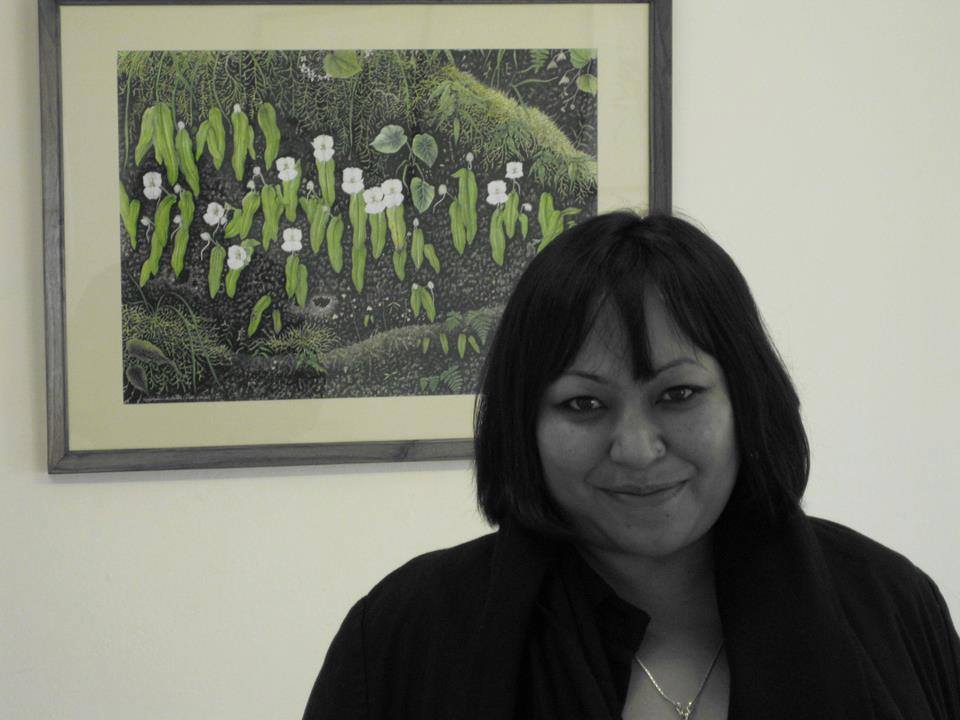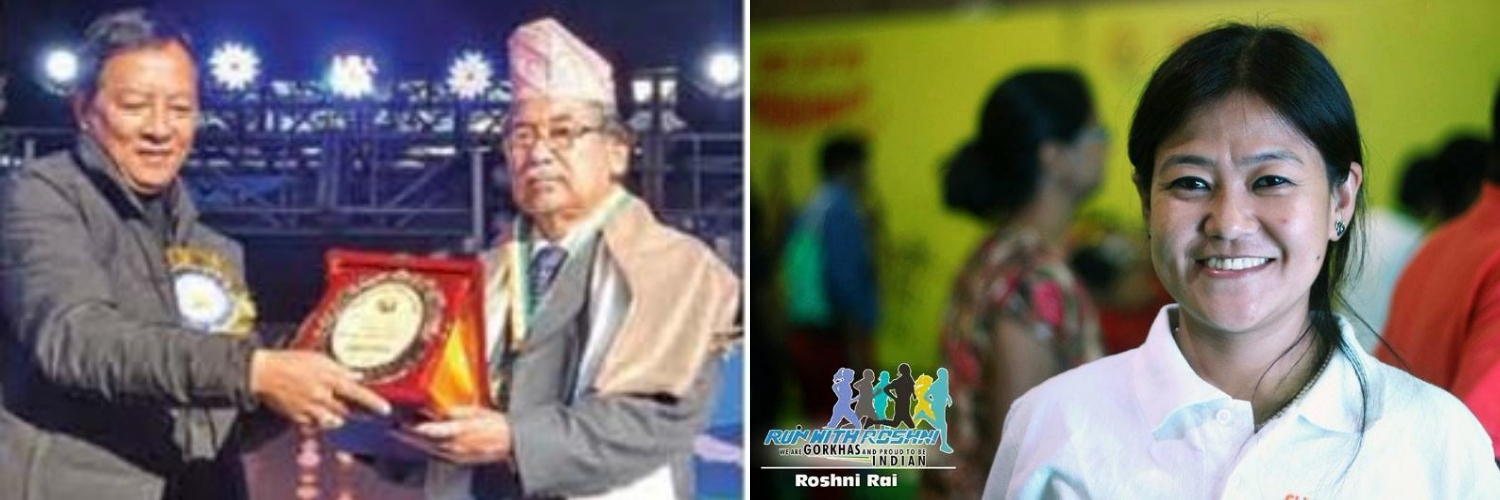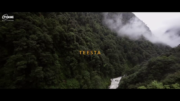Botanical Artist, Teacher, Mentor, Philosopher and an Avid Nature Lover. Ms. Hemlata Pradhan opens up about her life, her love of botanical illustrations and the mountains
Brief Profile:
Name: Hemlata Pradhan
Profession: Botanical Artist
Daughter of: Mr. Udai C. Pradhan and Mrs Tej K. Pradhan
Better half: Christophe Jobart
Place of birth: Kalimpong
Primary School: St. Joseph’s Convent, Kalimpong
Secondary School: St. Joseph’s Convent, Kalimpong
Higher Secondary school: Dr. Graham’s Homes, Kalimpong
College ( s) : – Kala Bhavan, Viswa Bharati, Shantiniketan , West Bengal
-The Royal College of Art, London, UK
– Royal Botanic Gardens, Kew, UK
University: Viswa Bharati, Shantiniketan, West Bengal

Philosophy of Life: The following lines may not sound like philosophies but they have helped me on my journey for the last 28 years which makes them absolutely sacred for the self !
1. ‘’Patience Donkey, Patience! My father used to keep on uttering these words while encouraging me to paint. It helped me develop patience at work.
2. ‘’Don’t be afraid of the dark’. A senior botanical artist made this remark when she saw that I was afraid to use dark shades many years ago. She told me without darkness/ shadows, the whole universe would look flat. That light and dark complimented each other perfectly! I think this was one of the best positive criticisms I ever got that not only helped me develop my paintings further but also helped me get over obstacles more easily.
Favourite artist: Pandora Sellars

Q. Could you please tell us about yourself, how was it growing up?
A. I was born and brought up in a family which has survived for four generations by growing and selling plants. As far as I can re-call, I used to be quite shy as a kid studying in St. Joseph’s Convent. Dr. Graham’s Homes later helped me to become more outgoing!
Ever since I began saying my first alphabets I remember my Father, a keen Orchidologist, horticulturist, an author, a botanical illustrator and a hard task master, trying to teach us the names of plants, trees, insects and birds that surrounded us and taking us out on field trips to nearby Lava and Kaefer jungles so we could observe nature at its best.
Most of the weekends we used to hike down to our small farm near the Relli River, Kalimpong, where we used to plant trees and other plants, play in the muddy paddy fields and stacked hays, splash in the nearby streams which used to be full of crabs and tiny fishes and listen intently to all kinds of local folk tales in the form of magical chants/ songs from a Shaman ( ‘jhyakri’ ) who also worked as the caretaker of the farm. He also taught us about medicinal plants found locally. All these experiences and many more remain deeply etched in my heart and memory and have also played an incidental role in generating keen interest and fascination for the natural world.
Q. What made you take interest in Botanical art?
A. As a kid, I used to be very fond of drawing anything that caught my fancy so much so that my school books used to be covered in doodles by the end of the year. The first time I painted flowers was when I was about 11 years old. I did not realize then that there was a hidden passion in me for painting plants. I only knew that I somehow had to put their beauty on paper.
When I was about 13 years old I happened to notice my father’s field drawings of orchids and rhododendrons which served to inspire and motivate me. I understood then that this was exactly what I wanted to do: to draw and paint Orchids and other plants from nature in my own ‘language’. And so my zest for painting plants began in earnest. I remember my mother (an apostle of love and silent strength) buying me my first box of water colours and me, painting a whole series of Cymbidium hybrids in green, yellow, brown, white and pink!
Q. When/how did you decide to take up Botanical art as a profession?
A. In 1993 when I was 18 years old and in my final year at Dr. Graham’s Homes, my parents encouraged me to send my orchid paintings for exhibition at the Japan Grand Prix- the international Orchid Festival in Tokyo, Japan. My painting of Nervilia macroglossa, a tiny and beautiful terrestrial orchid from the Himalayas was selected for the Trophy Award and this set me to consider seriously taking botanical art as a career. This was also my first break.
Q. Wanting to become a Botanical Artist must have been an unusual profession choice back in the day, how did your parents react? Did they not push you to join a government job?
A. Yes, to become a botanical artist was indeed an unusual professional choice but I was very lucky and blessed to receive positive support from both my parents.

Q. Can you tell us something about your struggling days, was it difficult to be established as a botanical artist?
A. My struggle to become a botanical artist began even since I completed my 10th standard. There were no courses offered in Natural History Illustrations in any of the art colleges in India which is indeed sad because India, once upon a time, had a rich legacy of many wonderful and proficient plant and animal Illustrators – Many of their works are now in the archival collection of Botanical Gardens and Natural History Museums in India and around the globe. Thus I joined Kala Bhavan, Visva Bharati, Shantiniketan, West Bengal for a Bachelor’s Degree in Fine Art in 1993.
I thought I would specialize in painting but since my grades were higher in Graphics (Printmaking), my professors thought it best that I continue with Graphics. So here I was, loving Botanical art dearly and getting a Degree in Printmaking because I had other no choice! Nevertheless, printmaking was fun and I enjoyed all the new mediums like lithography, etching, silkscreen printing, serigraphy etc. I was getting the opportunity to learn. I especially loved etching because it required meticulous handling – quite similar to botanical art techniques- and found that I could actually portray plants well using this medium.
Meantime, I desperately began to hunt for institutes that could offer me a short course in Botanical Illustrations. And that is when I learnt about the Royal Botanic Gardens, Kew, England . The institute was offering Diploma courses in botanical illustrations to Margaret Mee scholars from Brazil but when they saw my keenness they agreed to offer me a place! So, when I was preparing for my final year Bachelor’s Degree in Fine Arts I once again applied for and was given a second grant by the Elizabeth Greenshields Foundation in 1998 which enabled me to complete my post-graduate Diploma in Botanical Illustrations from Kew Gardens under two eminent plant illustrators, Christabel King and Dr. Judy Stone.

Whilst at Kew, I learnt that the world renowned Royal College of Art, ( RCA) London was offering two years Master’s Degree in Natural History Illustration and Ecological Studies! My dream finally came true when I applied for it and received a place there. Unfortunately, the fee structure for overseas students was extremely high and coming from a middleclass family, I could not possibly expect my parents to pay the huge sum! But I did not want to lose my place so easily. On advice from my father, I wrote to the Disciplinary Board of the College with a request to allow me to defer for a year in order to look for scholarships. I was not sure if they would agree but I thought it would be worth s shot. Fortunately, I got a positive response from saying that they would keep my place for a year.
The hunt for an appropriate scholarship was not an easy task and took me from Government offices to Foundations to organization but to no avail! Towards the end of the year when I had almost given up all hope, the Natural History Art Professor at the Royal College of Art (Professor John Norris Wood) suggested that I apply for the DFID shared scholarship scheme from the Association of Commonwealth Universities, London and that the Royal College of Art itself would stand as my referee. In 2000, I finally received the scholarship that supported my study and stay at the UK for two years.

The struggles are always there, not only in the field of art but in all the fields. The trick is not to give up too easily or underestimate your own capabilities.
Q. Which was your big break, as in a commission/assignment, which announced to the world that you have arrived? And how did that happen?
A. The big break happened as a result of a series of exhibitions between 1993 and 2011 rather than assignments or commissions.
Between 1993 and 2000, I exhibited at the Royal Horticulatural Society’s Westminster Shows in London winning the Bronze medal, Silver medal, Silever-Gilt medal and finally receiving the Gold Medal in 2000 for my paintings of India’s Jewel Orchids.
Having noticed the Jewel Orchid series in 2002 by the Philately Department of the Royal government of Bhutan, I got the opportunity to have the works specially depicted on their postage stamps and First Day Covers to celebrate the Year of the Mountains as well as to commemorate the second Meeting of the Orchid Specialist Group/ IUCN/SSC.

In 2005 I participated at the 18th World Orchid Conference, Dijon, France, once again winning the Gold Medal for the display of India’s Wild Orchids in Nature.
In 2007, I received an invitation from the India Habitat Centre (IHC) , New Delhi to have a solo exhibition at their gallery.
In 2008 I exhibited my paintings at the Siddartha Art Gallery, Baber Mahal Revisited, Kathmandu, Nepal.
In 2009, my excitement knew no bounds when I was invited by the British Museum to exhibit at the Museum and also carry out workshops in Botanical art during their Indian Summer event.
My final solo exhibition of Wild Orchids and other plants of the Indo-Himalayas was held at Serindia Gallery, Bangkok, Thailand in 2011.
So one thing just led to another. The shows provided ample opportunities to travel, learn, meet and interact with people which was crucial to my development as a botanical artist.

Q. Your work, in particular your botanical illustrations have been recognized world over – seem to be tedious requiring meticulous work, great concentration and attention to detail. Where and how do you find the inspiration for your creativity?
A. Inspiration for me is everywhere – especially here in the hills. As I set forth on this magnificent but often very difficult journey I began to realize that just painting the beauty of plants was not enough. The more I found out about our dwindling natural heritage the more obsessed I became to contribute to its conservation. But the question was how?
In the early 2000 an incident took place in our hills which caused a lot of hue and cry from nature lovers and conservationists alike. It was heart-rending to see large areas of trees felled, huge portions of hills cut away and unique spots of natural beauty irreversibly damaged by the Teesta Hydro-Dam Project in North Bengal so close to the Mahananda Wildlife Sanctuary.
Thousands of orchids and other plants of great scientific and aesthetic interest which form parts of complex web of life in the valley were eliminated without a second thought. This got me thinking that these wonderful sights would soon be a thing of the past if unrestrained development like in the Teesta River Valley and other places in the Himalayas carried on. It became my passion to observe them in nature and document them as I found them.
The aim was to 1. Highlight them as extremely important subjects for conservation 2. To immortalize the plants on paper for all times to come 3. It would serve as important documentation for conservation biologists.
This meant working very closely with nature, going for field studies, getting to know the plants and their habitats intimately and also working hand –in-hand with botanists. Thus in botanical art, one needs to be botanically and scientifically as accurate as possible .
Once at an exhibition a gentleman looked at one of my Orchid painting, critically, for a long time. Then he told me ‘’I like the fern! I specialize in ferns and I feel you have done justice to it ! .’’
Q. From amongst all the projects that you have handled, creatively which was/has been your most difficult project, and why?
A. In order to further my dream of combining Art, Education and Conservation at the grassroots, I began a small Natural History Art School with a group of young children aged 6 to 12 years from underprivileged and troubled families 4 years ago from villages in and around Relli Valley, Kalimpong .
My philosophy in teaching is a work in progress that generated from my belief that art could be a means to help provide holistic education to children at the grass roots level, preparing them mentally and physically to meet the challenges of day to day living as well as the academics. It could also be a very important way to make them environmental conscious while helping them bring livelihood and sustenance in the future.
1. Art is a universal language that everyone, even a layman or a child can understand and enjoy.
2. Nature encompasses everything and is the best teacher one can have if we are open to it and we are privileged to live in the foothills of the Himalays!
3. A child, with his/her natural curiosity, power of observation, open mindedness, inquisitiveness and playfulness could become its ideal student.
4. A child could become an instrument of positive change in his/ her society and the world at large.
These children had never touched colours in their lives nor were they aware of the art world. Also, the parents did not want them to learn ‘art’ and waste their precious time when they could be better off just helping around the house or earning a rupee or two by doing odd jobs. I knew I was up against a tough yet exciting challenge.
Q. Which project is the closest to your heart and why?
A. Besides other things, education in remote areas in the hills has never been easy. Living in a village, I can see and feel how much a child has to struggle in order to complete his/ her education. They are either not provided an opportunity to complete their school or else they are dropouts because there wasn’t enough guidance , motivation or funds. They travel, sometimes even walk for hours, to reach their schools. College is something that is way out of reach for a large majority of them.
The Natural History Art School is thus an ongoing project that is closest to my heart because I hope to one day provide opportunities to such children. Later my aim is to have a full- fledged Natural History Art Institute for them.
Q. Do you have any plans that includes Darjeeling region in the future?
A. This project already includes the whole of Darjeeling region. If I can give back with gratefulness to our hills even a quarter of what she has provided us, I know I would have lived my dream!
Q. What do you like the most about your profession?
A. I love everything about my profession because it is also my passion and meditation. As Joseph Campbell, an American Mythologist, Writer, and Lecturer said –
‘’ If you follow your bliss, you put yourself on a kind of track that has been there all the while, waiting for you, and the life that you ought to be living is the one you are living. Wherever you are—if you are following your bliss, you are enjoying that refreshment, that life within you, all the time.’’
12. What is the secret of your success when so many others have failed in your field?
A. Perseverance, hard work , patience , faith and not losing sight of my goals even when plenty of times I have seen no light at all the end of the tunnel. The motivation and positive support from my family, friends and media has also been tremendous. Also, I feel the great man upstairs has been extremely kind !
Q. Was it difficult for you as a Gorkhali to be established in the world of art?
A. Being a Gorkhali was never been an issue at all in order to establish myself in the world of Botanical art .
Q. Is the Art world more open to the people from the hills and North-East India today than it was when you started? How?
A. The opposite could be true also, don’t you think? I feel that people from the hills are more open today to the world of art than before. I can still recall vividly a mail that I received back in 1998 from a person stating his parents’ reaction when he told them that he wanted to join an art college. ‘’Abo artist bhayera bato ko sign board po paint gardai hinchas hola, ho? ‘’ I am not stating that the situation has changed completely today. But I would definitely say that the people are becoming more aware of the world of art and are going with the flow.
Q. Do you have any plans to include stories/themes from Darjeeling/Sikkim/North-East for some of your future work?
A. The paintings that I have exhibited in the past decade in India and abroad bring to focus the rare and unique species of Orchids, Lilies and other plants that I have seen and observed growing in and around Kalimpong, Darjeeling and the Sikkim Himalayas and I would like to continue doing so. It is my hope that these works will bring joy and kindle and foster the interest in these irreplaceable plant treasures and make us all join hands to conserve them for all times.
Q. Some people have suggested that all the big names from our parts of the world Darjeeling, Kalimpong, Kurseong, Mirik, Siliguri, Sikkim do not care for our people once they make it big? What do you have to say to them?
A. I would not like to comment on this but I would definitely like to state that if our infrastructures were improved upon and the right opportunities provided, our children would definitely find their way back home. In fact, they would not even have to leave in the first place!
Q. Any words of advice for youngsters who want to follow on your footsteps, what are the qualities that are required to be a successful Botanical artist?
A. Botanical art requires large amounts of discipline, passion, hard work, patience and perseverance. As a botanical artist one also needs to be very conscious of the fact that the responsibilities are manifold for, your artworks are not just meant for aesthetic purpose but also serve to bridge the gap between art and science, help in conservation by raising public awareness of the flora and fauna and also largely contribute to preservation of the natural world.
Botanical gardens in India have only a handful of botanical artists and are on the lookout for good illustrators. If you want a Government job, here is something that perhaps you may want to give a good thought about!
………………………..
TheDC Editorial Note: We are most grateful to Ms Hemlata Pradhan ji for taking her invaluable time to answer all our questions, and are hopeful that her story will inspire many budding artists in our community






Leave a comment